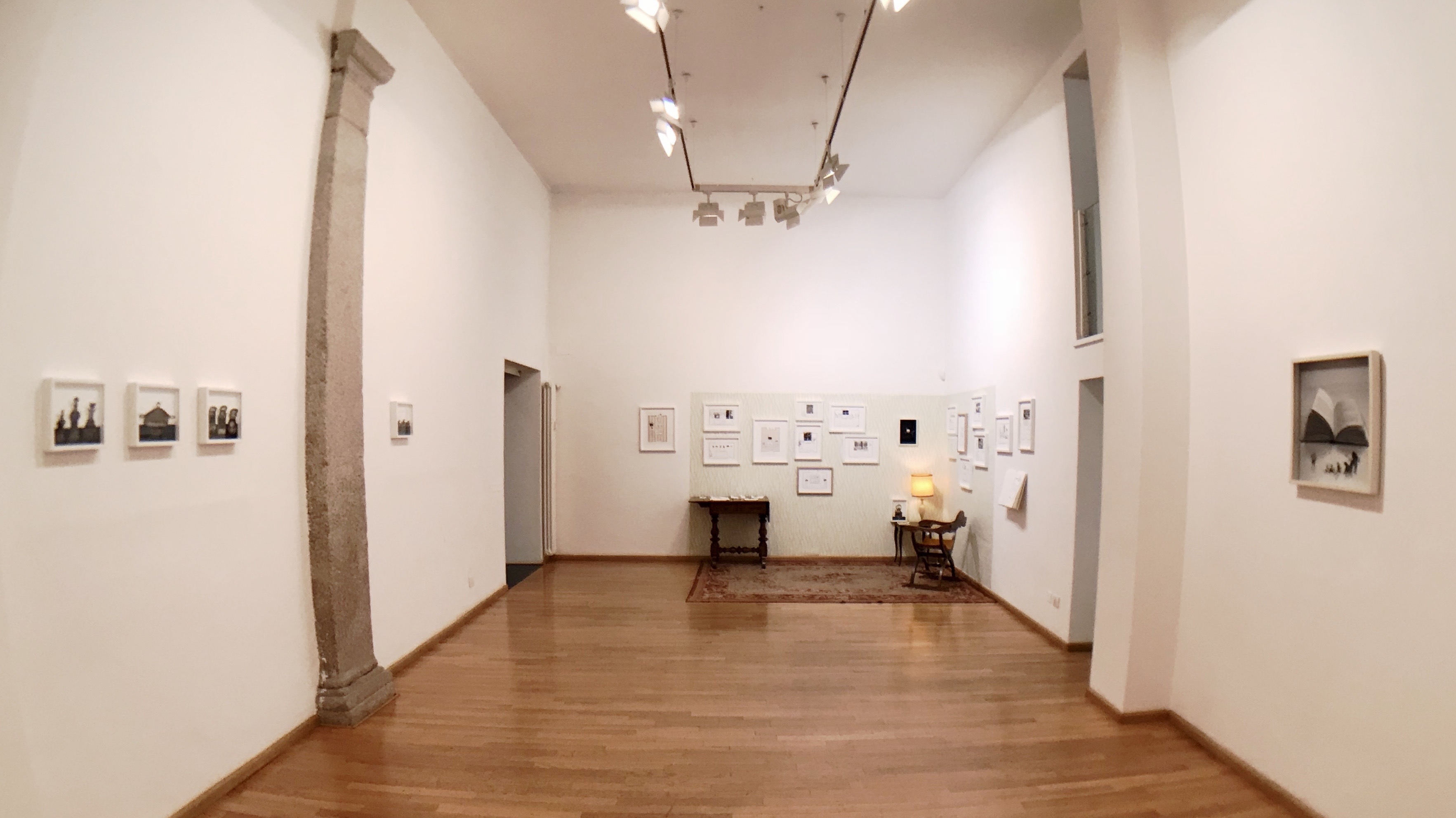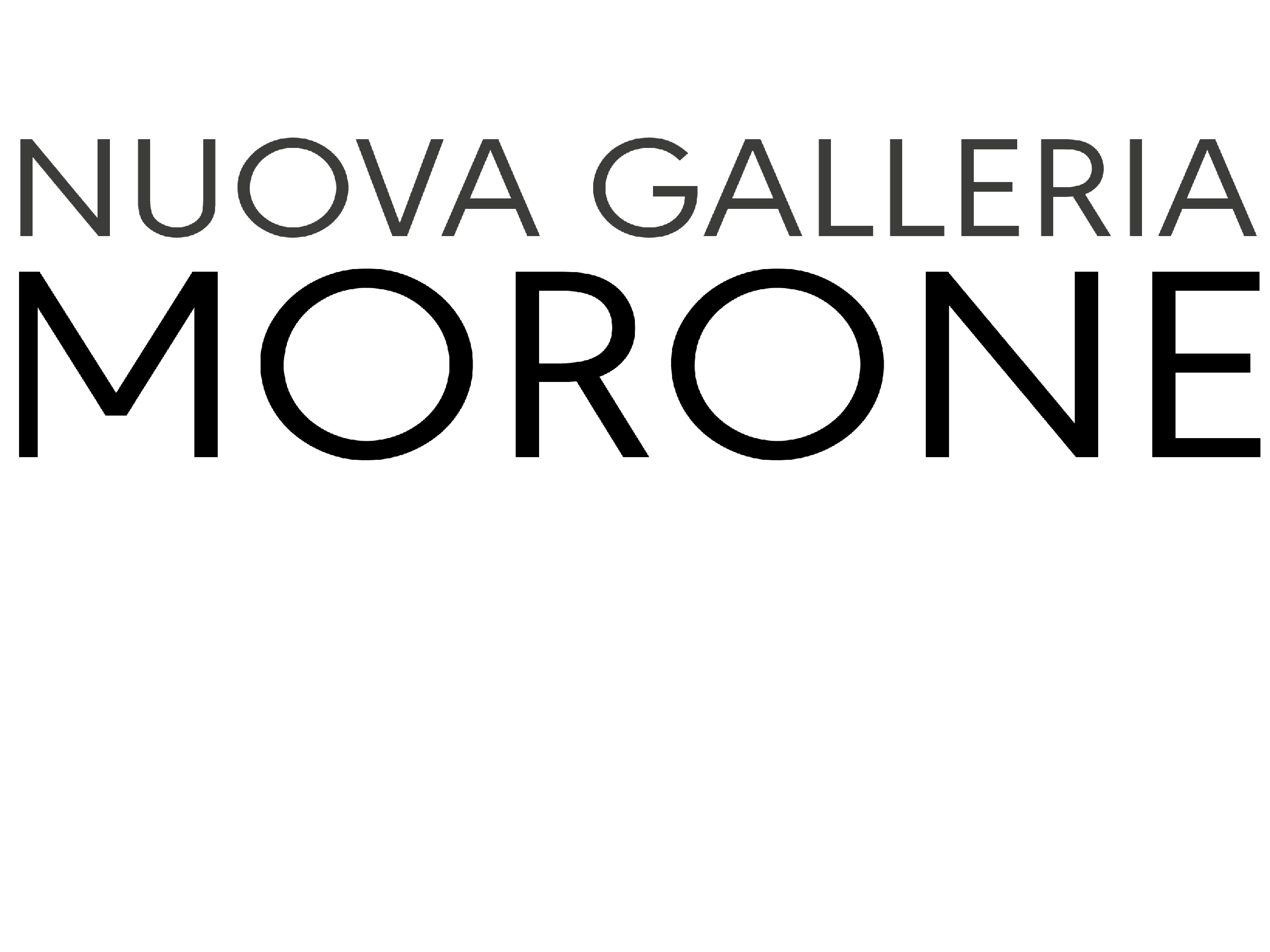
IL PARADISO? UN LIBRO | Meri Gorni
In the world of Meri Gorni, life and literature are mixed together — and how could it be otherwise? In her artistic language, signs, drawings, words and sentences are closely intertwined; in their growth — comparable to that of a weed — they also take possession of objects and photographs.
It is difficult to define Gorni’s work: she is first and foremost a teller of tales that are composite and composed through a skilled process of assembling visual and verbal fragments that often take the form of a book, or give rise — together with the inclusion of objects — to installations having a strongly evocative character. Her stories — which are never sensational — remain partially sketched out in the background;1 barely hinted at, they emerge like enigmatic tips of icebergs in order to call our attention to the profound uniqueness of every life.
One of the favourite modes of behaviour of Gorni’s imagination starts from her encounter on the stalls of a flea market with old photographs and objects from the past, which she selects and later ‘rectifies’, as Duchamp would have put it — in other words, to a greater or lesser degree altered so as to be arranged in such a way as to generate other sparks of meaning that are suggested by the new combinations with the texts and also with the sequences created. As already mentioned, the book form has a central role in her work, nearly always as an immediately recognizable entity or as a more distant and vague evocation. Gorni’s books, published or otherwise, are composed of images and words that have mainly been found, thus they are generally ‘someone else’s property’, collected on the basis of common subjects and themes. There are splendid books she has conceived and created that regard the fundamental activities of our lives, in particular reading and writing, two practices for her — and for many of us — that are essential and redemptive.
The texts of varying lengths that the artist always inserts, using her own handwriting, in the sheets of paper of her works — her preferred locus is paper, which is, in any case, like the page of a story — are drawn from various authors she has read over the years, and are indispensable references and veritable classics. These passages placed at the foot of the page serve as suggestions for interpreting the scenes in the photographs — always black and white, almost if laying claim to their literary origin (writing is putting it down in black and on white) and also their nature as shadows, copies of reality, traces of a presence that is immediately absent, in order to summarize in a simple manner Roland Barthes’s complex and refined reflections on photography. In this context, the photographic images are anything but inert, incoherent and isolated from the other elements present in the sheet, because the same hand that writes, draws in pencil in order to continue their lines as they branch out beyond the edges of the scene, connecting them to the observer’s space and present time. In her Stanze degli scrittori (The Writers’ Rooms) series, the same linking function is carried out by a special feature: the plan drawn in ink of the form of each room shows the perimeter interrupted by the doors, a clear invitation to enter.
The role of the objects, in the photographs too, albeit in a more subdued and marginal manner, but no less eloquently — watches, soup tureens, plates, bottles, as well as grandfather clocks and tablecloths — is that of bearers of meaning. Their power, as witnesses of various events linked as much to individual lives as they are to our common history, is amply confirmed by our attitude to collecting and accumulation. The fascination that the objects can hold, however, has something obscure and unknowable that coexists with their transparency. As the Russian-American poet Joseph Brodsky put it: ‘Our artifacts tell us more about ourselves than our confessions’.2 The objects end up in museums, they are sold by auction or handed down as inheritance, and they pass from hand to hand while the patina of the gestures of those who have touched them remains— also with just the imagination.
Some objects are so important from a symbolic point of view that they may even come to represent a person, as the artists of the past have taught us and cartoonists know only too well. Gorni, who habitually works in cycles, has recently devoted herself in particular to Gli oggetti nella letturatura (Objects in Literature), the result of a trick of the imagination that arbitrarily causes a person to recognize, in a photograph of a teapot, the one belonging to Virginia Woolf and, in the picture of a soup tureen, the object forming part of the crockery belonging to Bouvard and Pécuchet, the memorable characters in the homonymous novel by Gustave Flaubert. In this way, the artist indicates literature’s main role: that of changing the way we perceive reality.
Not only objects, however, but also rooms; as stated earlier, Gorni has devoted many pages to writers’ rooms because in their own room all the conditions needed for writing are to be found. From the window a garden is often visible, since art is like a flower that blooms, an unexpected vision beyond everyday experience.
Like the snake sloughing its skin, photographic images and the written word remain as traces of our condition — lost, imagined and rediscovered as it may be — that ‘one is never finished with….’3
Gorni’s linking of images and words establishes the magic circularity characteristic of literature and art: words and images are things and things are words and images and, pace Magritte, as in dreams, it is always necessary to take literature literally….
Each series of works has a title that is more or less descriptive. An example is Letti di notte (Beds/Read by Night), consisting of hybrid objects that appear in a mixed form: they resemble an ex-voto as well as a family portrait, with a doll’s-house-like taste, ranging from Japanese hina dolls and to those used in voodoo rites. This title clearly plays on the double meaning in Italian (letto, pl. letti, is the noun meaning ‘bed’ and also the past participle of the verb leggere, ‘to read’). This display consisting of faces surrounded by fabric and accompanied by the inevitable presence of miniature books — while it manages to get a smile out of even the most cynical of observers, immediately linking them to their childhood — keeps in its centre that marvellous treasure chest that every book contains, making it an inexhaustible source of experiences. Paradise? Let there be no doubt about it: it’s a book.


